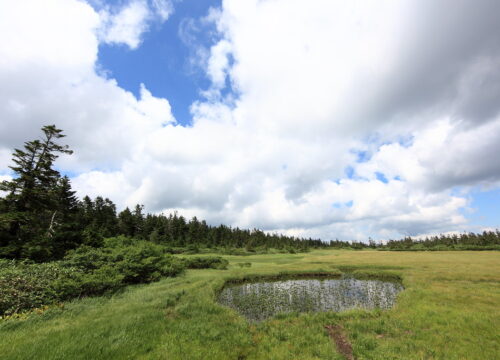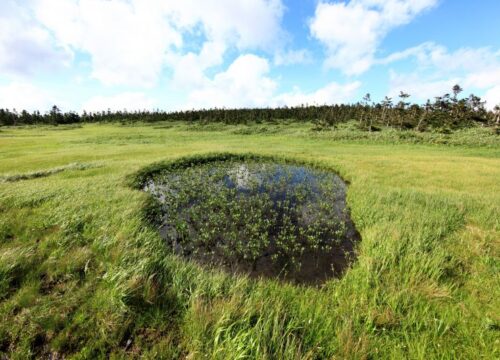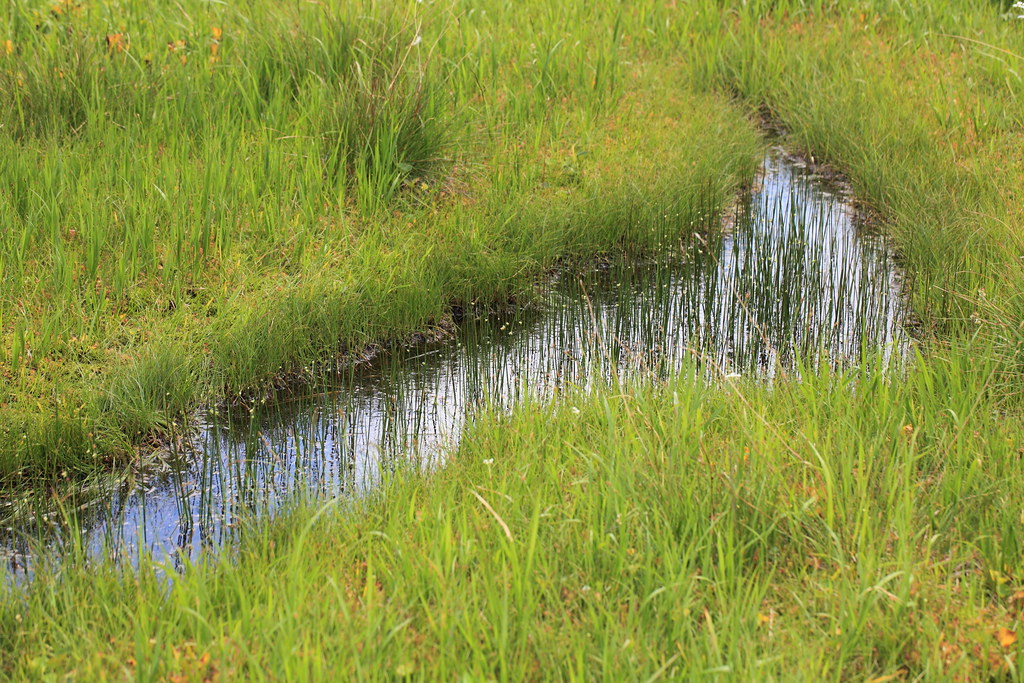The Kuroyachi Wetlands
The distinctive dense dark-green forests of Kuroyachi (“black marsh”) are made up of clustered Maries firs.
At the foot of the mountains where Chausudake and Hachimantai intersect, the earth is black with peat. As the deep winter snows melt in spring, the vast peatlands of the Kurotani region bloom with aquatic plants, iwakagami, and other wetland plants that thrive among last year's dead grass. In summer, the flowers of the Chinese fritillary, the goldenrod, and the tingle-lily sway in the breeze. In the fall, clusters of rindo (a type of Japanese ginger) turn the landscape a brilliant purple.
Located 700 meters from the entrance to the wetlands, the Kuroyachi observation deck provides views of the Kuroyachi wetland and its ponds. Along the boardwalk trail is Kuma no Izumi (Bear Spring).
Along windy ridgelines, plants adapted to dry conditions grow. Where the snow does not melt completely and the wind does not blow in under the cliffs, plants adapted to wet conditions can be found. However, this environment slows plant growth, so wildflowers such as Nikkohkisuge, ricevine cherry, Kuruma-Yuri, Ugo-Thistle, and Shinano Kimbai bloom only after the spring alpine vegetation in the summit region has begun to wane.




